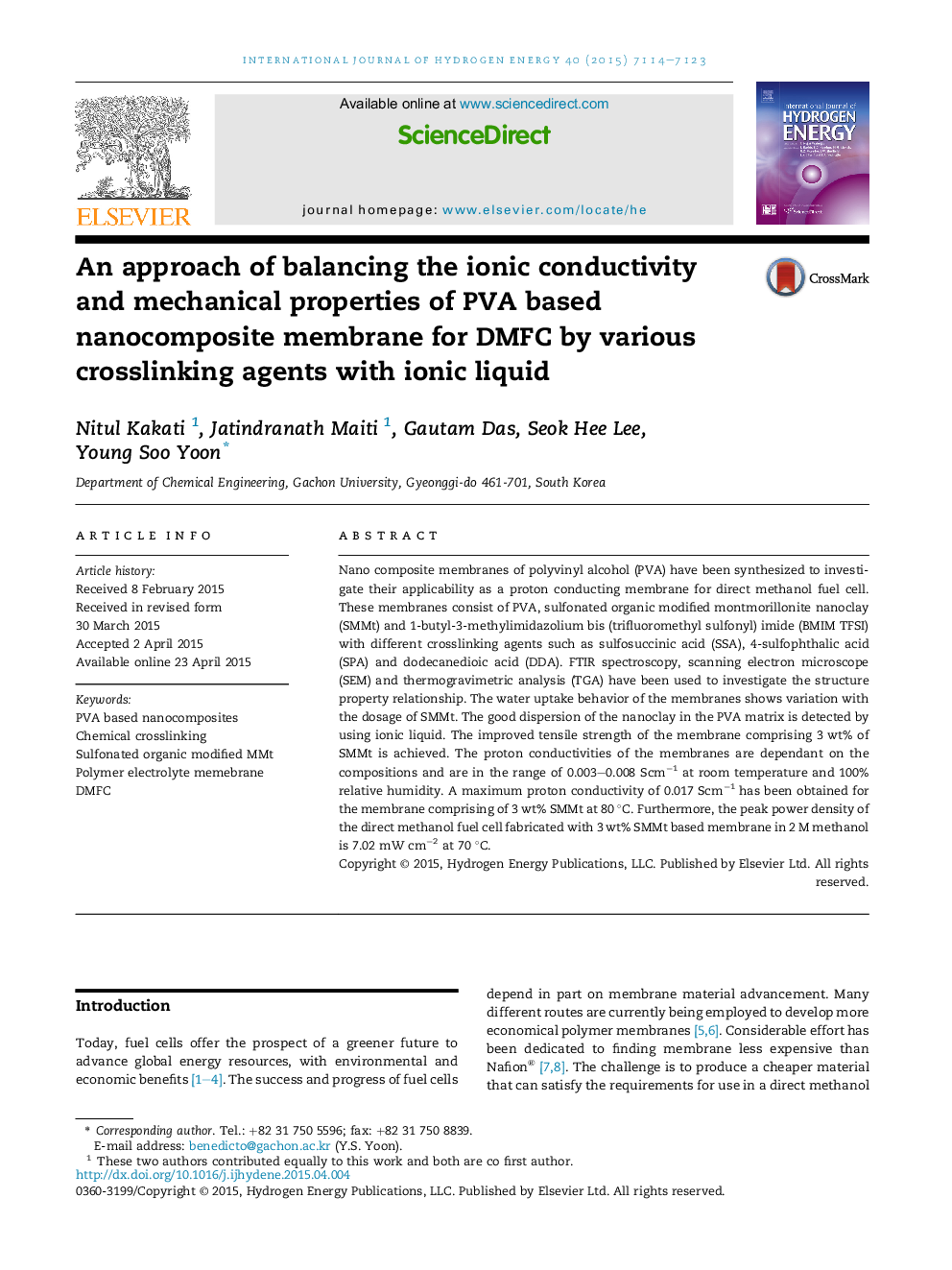| Article ID | Journal | Published Year | Pages | File Type |
|---|---|---|---|---|
| 1279895 | International Journal of Hydrogen Energy | 2015 | 10 Pages |
•Polymer electrolyte membrane comprising of PVA with sulfonated organic modified MMt and ionic liquid for DMFC.•A new approach of adding three cross linking agents into matrix.•Controlling mechanical strength and ionic conductivity by using ionic liquid, SMMt and cross linking agent interaction.•Reached a maximum proton conductivity of 0.017 Scm−1 at 80 °C.•Achieved maximum power density of 7.02 m/W cm2 at 70 °C.
Nano composite membranes of polyvinyl alcohol (PVA) have been synthesized to investigate their applicability as a proton conducting membrane for direct methanol fuel cell. These membranes consist of PVA, sulfonated organic modified montmorillonite nanoclay (SMMt) and 1-butyl-3-methylimidazolium bis (trifluoromethyl sulfonyl) imide (BMIM TFSI) with different crosslinking agents such as sulfosuccinic acid (SSA), 4-sulfophthalic acid (SPA) and dodecanedioic acid (DDA). FTIR spectroscopy, scanning electron microscope (SEM) and thermogravimetric analysis (TGA) have been used to investigate the structure property relationship. The water uptake behavior of the membranes shows variation with the dosage of SMMt. The good dispersion of the nanoclay in the PVA matrix is detected by using ionic liquid. The improved tensile strength of the membrane comprising 3 wt% of SMMt is achieved. The proton conductivities of the membranes are dependant on the compositions and are in the range of 0.003–0.008 Scm−1 at room temperature and 100% relative humidity. A maximum proton conductivity of 0.017 Scm−1 has been obtained for the membrane comprising of 3 wt% SMMt at 80 °C. Furthermore, the peak power density of the direct methanol fuel cell fabricated with 3 wt% SMMt based membrane in 2 M methanol is 7.02 mW cm−2 at 70 °C.
Graphical abstractFigure optionsDownload full-size imageDownload as PowerPoint slide
